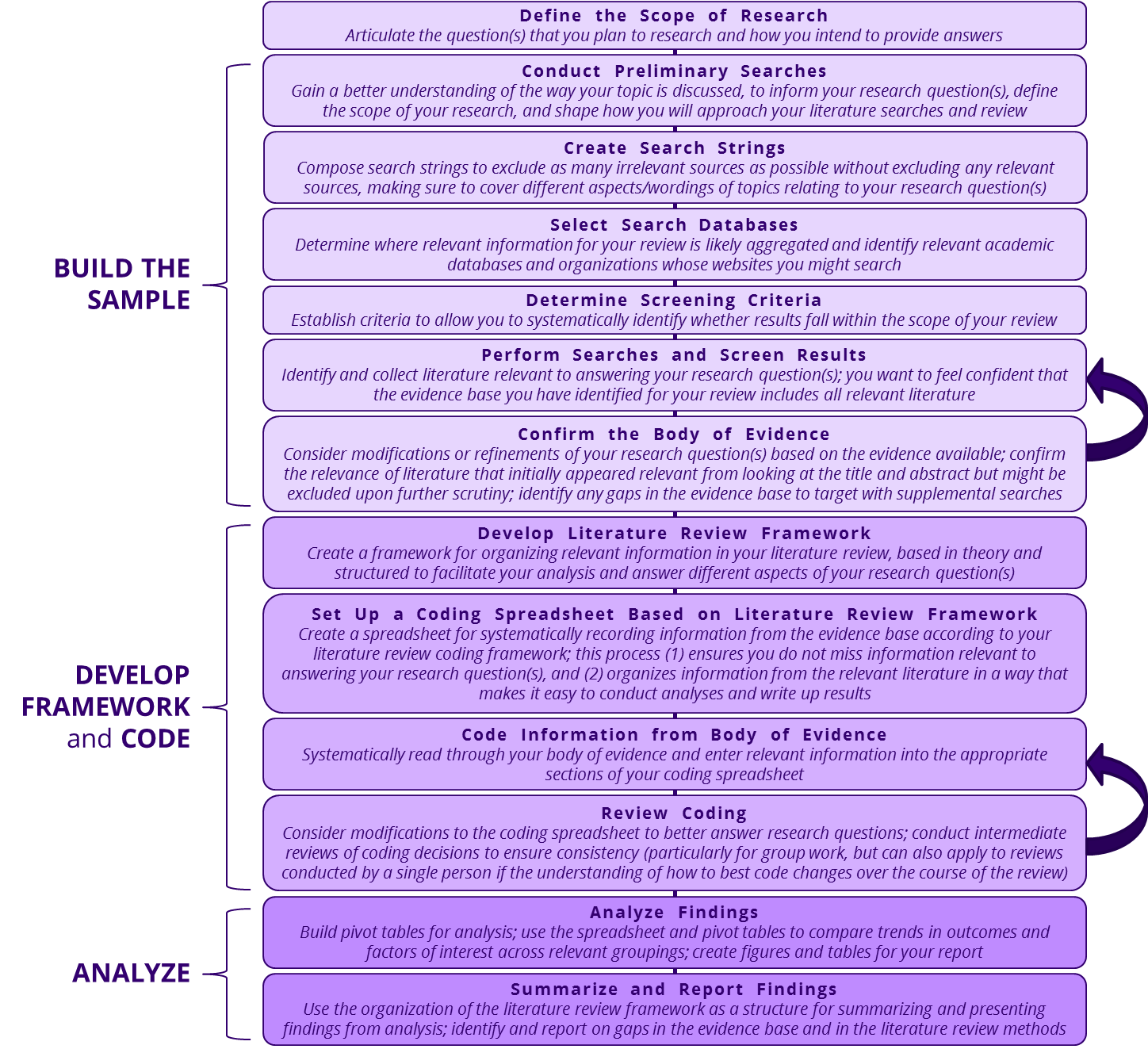A literature review is the starting point of many research projects because it helps the researcher understand the existing body of evidence on a particular subject. While the required level of rigor depends on the intended use of the review, the goal is to have some level of certainty that you have identified the relevant literature, and that you are collecting from the literature the information necessary to rigorously evaluate the state of current knowledge relating to your research question(s).
EPAR’s Approach
To increase our confidence in the results of literature reviews, EPAR emphasizes three key components of the process: (i) building the sample of studies to review; (ii) developing a review framework and systematically extracting information from the sample of studies using a coding spreadsheet; and (iii) using the coding spreadsheet to help analyze the evidence base and present the results. The figure below outlines the general steps that EPAR follows when conducting a literature review, organized according to these three key components.

The intended results of a rigorous literature review are:
- Transparency around the scope of your research and your review methods;
- Confidence (among both the researchers and your audience) in your clearly defined body of evidence and the integrity of any findings you pull from it;
- Improved teamwork – with everyone following the same “system” in identifying, coding, and analyzing evidence;
- A spreadsheet of evidence from the literature coded according to a well-organized review framework, covering key aspects of the theory relevant to your research question(s); and
- A document presenting findings from your analysis (and relevant tables/graphics) that answers your research question(s) and identifies gaps in the evidence base (or in your review methods).
Read EPAR’s Literature Review Ideas for the Experienced Researcher brief for an overview of EPAR’s literature review process, with examples from our review of the literature on the effects of morbidity on economic growth (EPAR Technical Report #293). For a more detailed step-by-step description of EPAR’s approach to literature reviews with additional tips and examples, see our Literature Review: A Step-by-Step Guide slide deck.